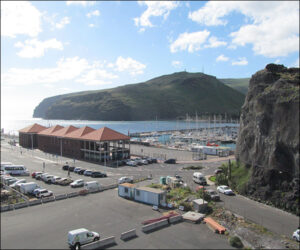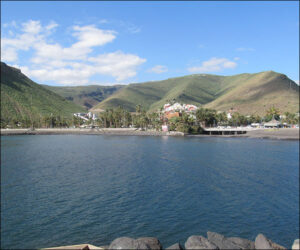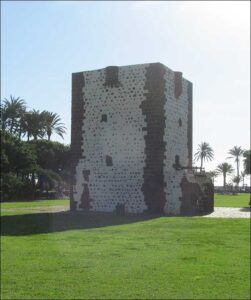Columbus’s second fleet stopped over at Gran Canaria on October 2, 1493, where sugar was stocked and a leaking ship repaired, and then anchored in the tiny harbor at San Sebastián on Gomera on October 5, the latter shown in two photos below. Prior to his first voyage, he’d had a brief love affair with Gomera’s governess, Beatriz de Bobadilla, who resided in the small tower shown in the third photo, and she welcomed his arrival with great festivities but likely not more.



In San Sebastián, Columbus arranged the purchase of eight pigs for seventy maravedís each. The cows and sheep already aboard were important to the future settlement’s food and clothing supply, but they were less adaptable, requiring grassland. Pigs could be seeded most anywhere but dry savannah or desert and would eat most anything, and the sows routinely produced litters of up to ten, ensuring rapid growth of the supply. Decades later, the contemporary chronicler Bartolomé de Las Casas would observe that “from those eight are descended all the thousands and thousands of pigs that have ever lived in the Indies.”
By October 13, a year and a day after Cristóbal’s landing on the Taíno Guanahaní (San Salvador) on his first voyage, the fleet sailed beyond Hierro, the westernmost of the Canaries, to make the landless crossing of the ocean he had shown possible.
